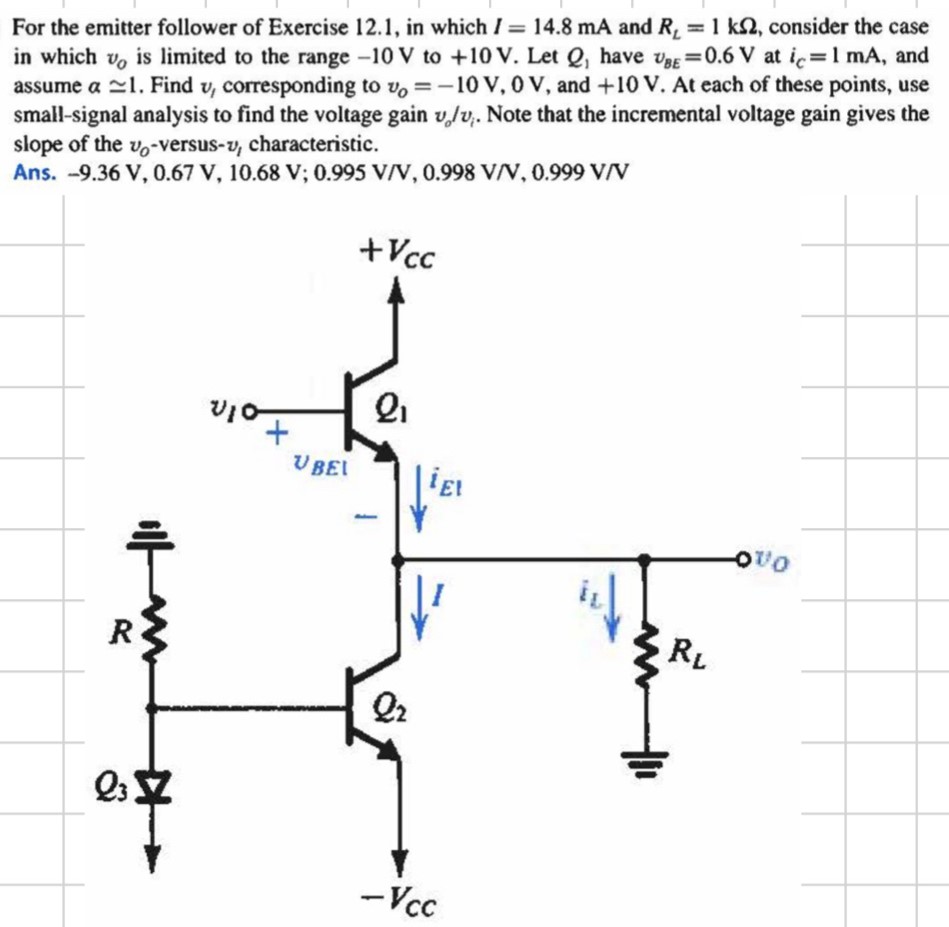For the emitter follower of Exercise 12.1 , in which I = 14.8 mA and RL = 1 kΩ, consider the case in which vo is limited to the range −10 V to +10 V. Let Q1 have vBE = 0.6 V at ic = 1 mA, and assume α≃1. Find v1 corresponding to vo = −10 V, 0 V, and +10 V. At each of these points, use small-signal analysis to find the voltage gain vo/vi. Note that the incremental voltage gain gives the slope of the vo-versus- vi characteristic. Ans. −9.36 V, 0.67 V, 10.68 V;0.995 V/V, 0.998 V/V, 0.999 V/V
